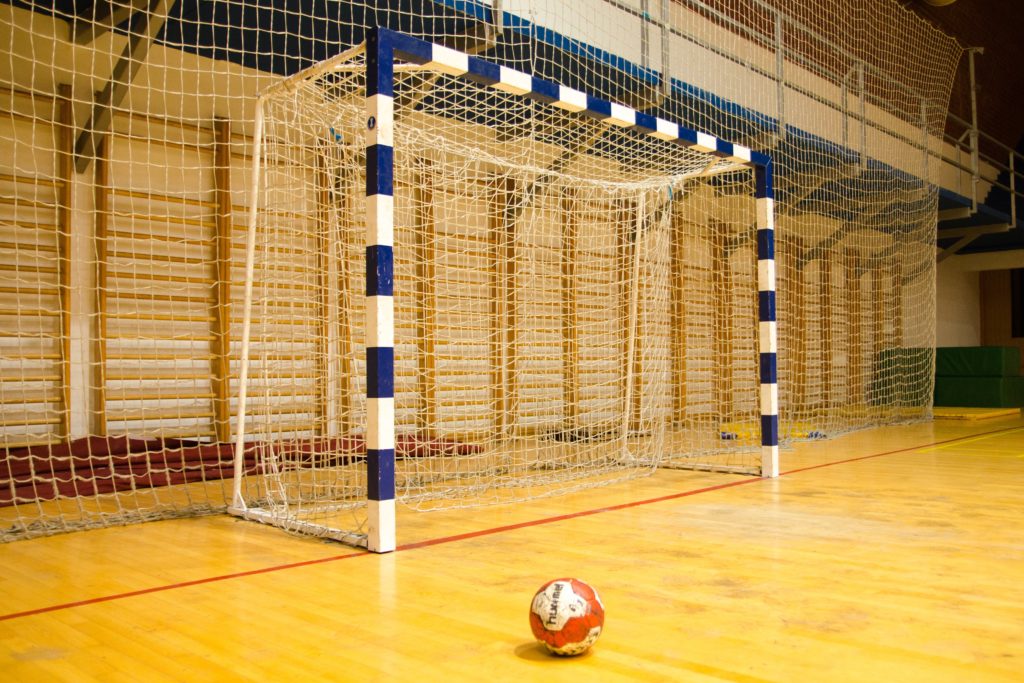Extract from: G. Chick (ed.), Acute and Chronic Finger Injuries in Ball Sports, 1 Sports and Traumatology, DOI 10.1007/978-2-8178-0382-1_1, © Springer-Verlag France 2013 (emphasis added in the text)

In ball sports, the hand can act as an instrument for striking or propelling the ball (basketball, handball, rugby, volleyball, etc.), or it can unintentionally be in contact with it (football). Finger injuries can also occur in the absence of a ball, especially as a result of a fall or after a strong contact with another athlete. However, the latter situation is not representative for volleyball since a net separates the players.
Some injuries are specific to certain types of sports, such as the jersey finger in rugby. Likewise, 30 % of the collateral ligament injuries of the thumb come from volleyball, whereas basketball, rugby and football represent respectively 19, 19 and 13 %. On the same note, 55 % of the radial collateral ligament injuries occur in volleyball, when only 21 % come from football, 14 % from handball, 7 % from basketball and 3 % from rugby [1].
1.1.2.3 Handball Handball is a team sport, mostly played indoors, with two opposing teams of seven players (one goalie and six field players). The objective is to score more goals than the opponent in two 30-min periods.
Each player has a particular role and the number of substitutions is unlimited:
- Goalkeepers are often relatively tall, in order to cover as much of the height of the goal as possible (2 m high). They also need significant flexibility to intercept the ball in the corners of the net, either with their hands or feet.
- Left and right wingers: They are usually smaller than central players. The left-wing position is usually occupied by a right-handed, and similarly, right-wingers tend to be lefties. This position requires the qualities of explosiveness and flexibility of movement.
- Left and right backs: Similar to the wingers, the left-backs are usually right-handed and vice versa. Their role is to initiate the attack; they are also able to jump to full extension to shoot and score goals.
- Centre: This position is occupied by the playmaker of the team. He is at the centre of the field, launching attacks and leading them along with his teammates. Smaller in size, the centre should be able to infiltrate the opposing defence. His position requires speed and flexibility.
- Circle runner: Positioned in the heart of the opposing defense, he blocks the defenders, either by staying in front of the goal and thus opening up for the wingers or by moving to the right or left, along the zone line.
Technical Moves
- Attacking: Players alternate between dribbling with the ball and passing it to their teammates. They can take up to three steps ball in hand. If a player stops dribbling by seizing the ball with both hands, he is then forced to shoot or make a pass.
- Multiple combinations within a team often precede the shot on goal. When a player is in a good position, he will either shoot from the ground or jump shoot over a defensive wall, which is a technique to generate more power. These techniques are one-handed.
- The defence: While the attacking team shoots at the goal, the defenders are entitled to block the ball by making a wall and lifting their arms up. Holding the Ball Since the ball has a small diameter, it fits perfectly to the palm of the hand. The fingers are spread over the ball; the thumb stabilises it, while the little finger locks the position (Fig. 1.12).
Holding the Ball
Since the ball has a small diameter, it fits perfectly to the palm of the hand. The fingers are spread over the ball; the thumb stabilises it, while the little finger locks the position (Fig. 1.12).
- Pass and set shot: During the pass, the hand should be above the head, while the elbow is close to the head. The throw consists of a shoulder movement towards the target, with flexion of the wrist at the end. The fingers should be pointing at the target. The movement is identical when a player shoots at the goal with his feet on the ground (for a right-handed, the left foot is in front and vice versa).
- Jump shot: A jump shot is a special shooting technique in handball. The attacking player takes a couple of steps, jumps, fixes the goalkeeper, and shoots. A right-handed player would jump from his left foot, while his right knee would be lifted up (Fig. 1.13). The characteristics of the throw are identical to the technique of the pass described above.
- The roucoulette is a particular shooting technique. It consists of doing a quick wrist movement to give a strong spinning effect on the ball. The effect on the rebound will redirect the ball into the goal and thus surprise the goalkeeper. This shot is mainly used by wingers as an alternative if the goalkeeper closes the angles well.

[1] Moutet F, Guinard D, De Soras X, Gérad Ph, Thomas D. Fractures et lésions articulaires les doigts dans les sports de ballon. In: Allieu Y (ed) La main su sportif. Expansion scientifique française, Monographie du GEM, Paris
Published in July 2013 by Springer Verlag (860p, 450 drawings), the book “Acute and Chronic Finger Injuries in Ball Sports” is available on Amazon.com

 English
English